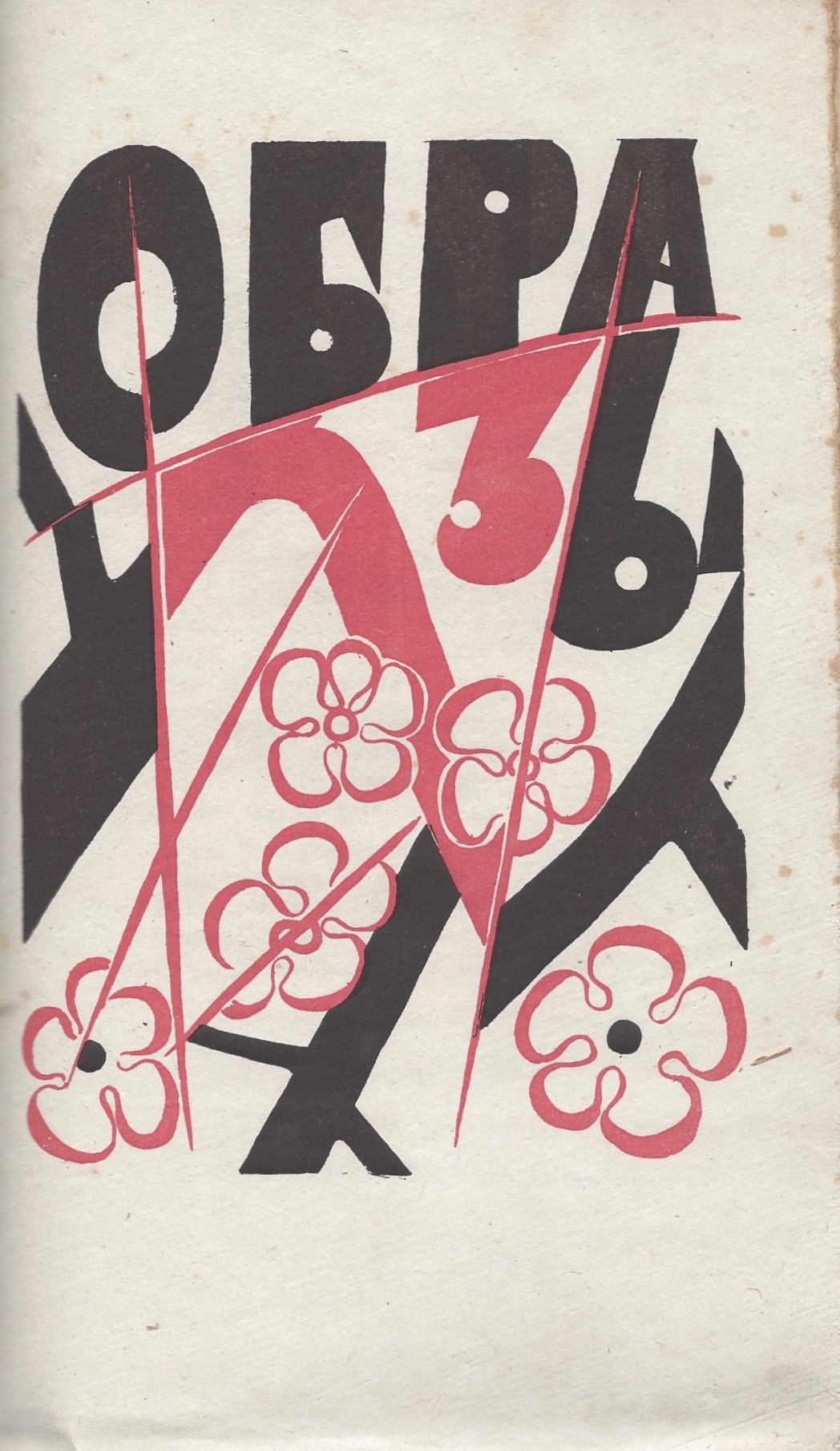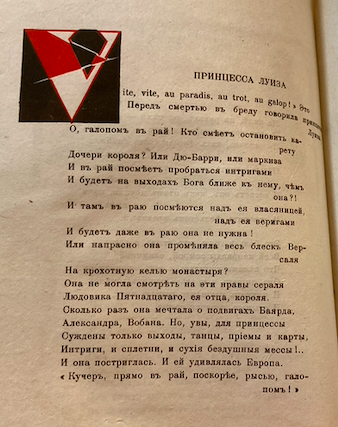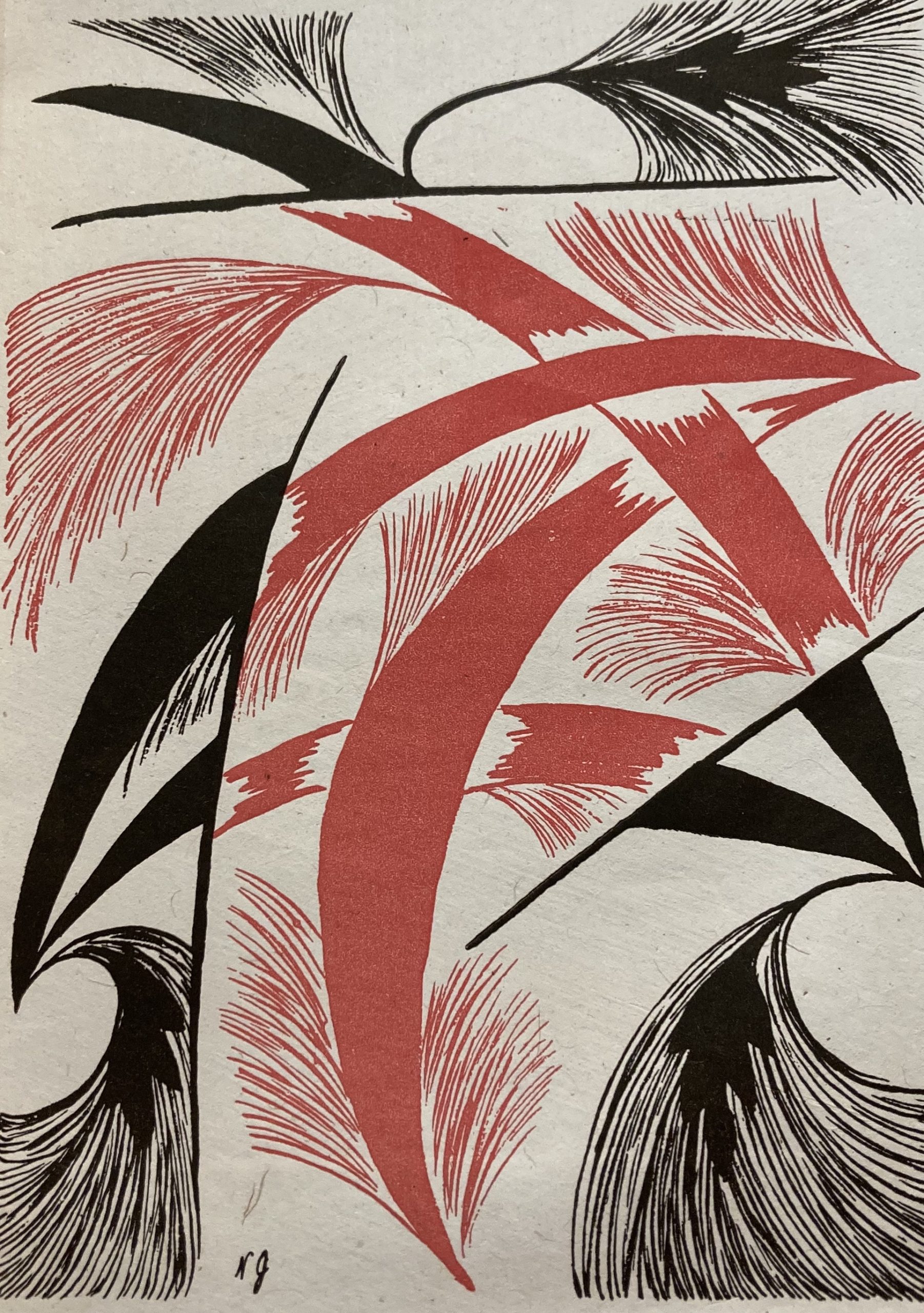TSETLIN, Mikhail (Amari). Прозрачные тени и образы [Transparent Shadows and Forms]. — Paris and Moscow, Зёрна (J. Povolotzki & Cie, Paris), 25 May 1920.
Octavo (210 х 160 mm). 69 incl. title and [7] pp. Woodcut head- and endpieces, initials and 2 full-page illustrations by Goncharova in red and black throughout. The book was printed in 1150 numbered copies.


Mikhail Tsetlin (1882-1945) (pseudonym “Амари” or Amari from “A Marie”, the name of his wife) was a poet, prose writer, critic, editor, publisher and patron of the arts. Regular literary and musical evenings at his house in Paris attracted major poets and artists of the Russian emigration, including Sergei Diaghilev, composers Igor Stravinsky and Sergei Prokofiev, poetess Marina Tsvetaeva, as well as Goncharova and Larionov whom he had already met before the Revolution. He was also known to help Russian emigrants financially; his collection, later donated to Israel, included several Goncharova’s stage designs and Larionov’s paintings — possibly, Tsetlin purchased them not only for their artistic qualities but also in order to support his friends.
This is the fourth collection of Tsetlin’s poems, divided into two parts: the first one is titled “Transparent Shadows”), and the second one is Obrazy [Forms] with a separate illustrated title. Goncharova abundantly decorated the collection with her original woodcuts: she created two full-page illustrations, 12 original head- and endpieces and 12 initials. Here, her favorite motives of folk-art sprawling flowers and dramatic diagonals are highlighted particularly well in their combination of red and black colors against the white background.

Her initials for the first part of the collection comply with the vegetative patterns of the frontispiece and the vignettes, wrapping letters in flowerful, almost art-nouveau patterns with a skillful treatment of sharp contrast between red, black and white. Such a delicate treatment of form of letters will be developed in her masterpiece of book illustrations, Le Conte de Tsar Saltan, created after the present edition. The initials for the second part, Forms, appear in a sharply different style closer to the one of the Soviet avant-garde, suprematism or constructivism — the first and possibly the only case of Goncharova’s use of these last two styles in her art.
- L’art décoratif théâtral moderne
- Samum
- Motdinamo
- Transparent Shadows and Forms
- Twelve. Scythians.
- Gorod (City)
- Conte de Tsar Saltan
- The Russian Ballet in Western Europe 1909-1920
- Tale of Prince Igor
- L’Annonciation: Roman
- Le thé du capitaine Sogoub
- Les Montparnos
- Les Ballets Russes de Serge de Diaghilew
- Skazki (Fairytales)
